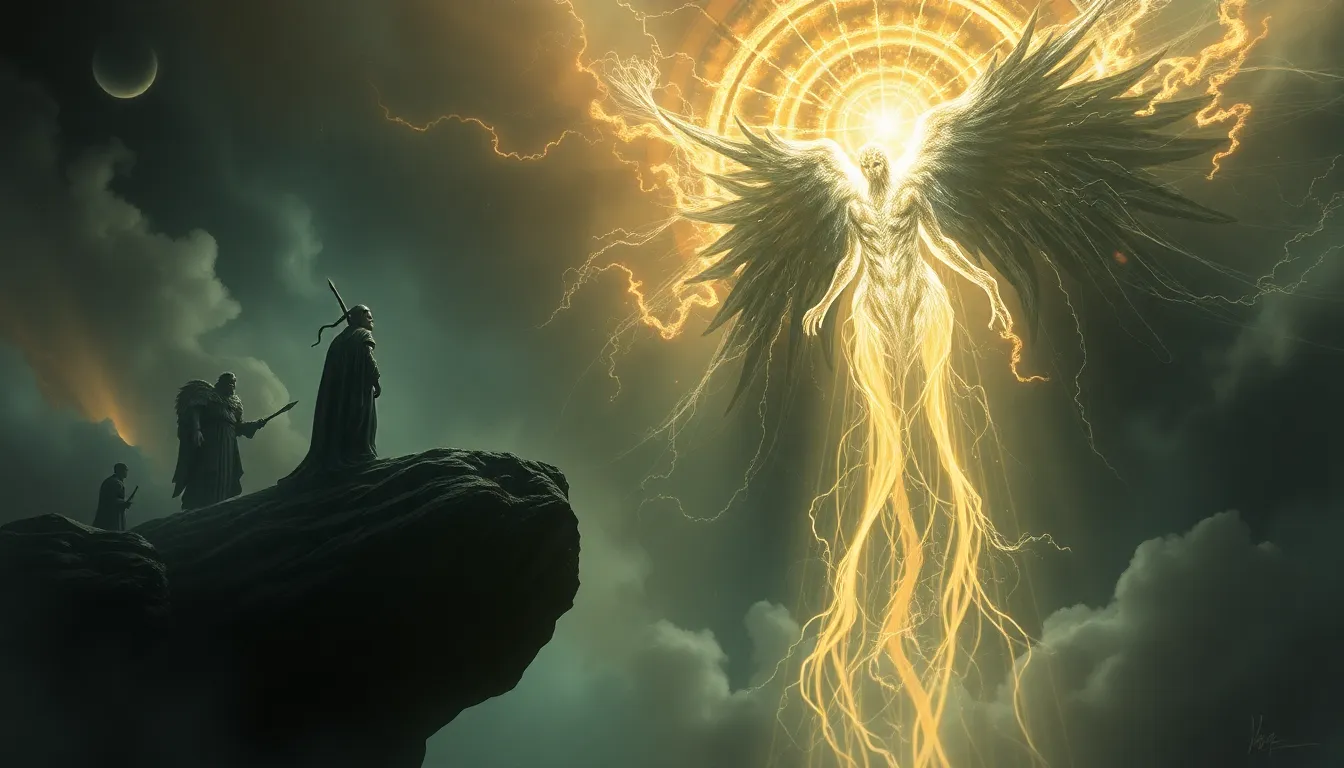The Quest for the Sacred Light: Myths of Enlightenment and Truth
I. Introduction
The concept of Sacred Light transcends cultural boundaries, embodying profound meanings in various traditions around the world. Sacred Light is often perceived as a divine force, a guiding principle that illuminates the path to enlightenment and truth. In many cultures, light symbolizes purity, knowledge, and spiritual awakening, standing in stark contrast to darkness, which represents ignorance and chaos.
Enlightenment and the pursuit of truth are central themes in mythological contexts, serving as milestones in the journey of self-discovery and understanding. Myths often depict heroic figures embarking on quests to uncover deeper truths, illuminating the human experience through allegorical narratives.
This article aims to explore the multifaceted nature of Sacred Light across different cultures, examining its historical perspectives, symbolism, and the profound journeys undertaken by seekers of enlightenment throughout time.
II. Historical Perspectives on Enlightenment
A. Ancient philosophies and their views on enlightenment
1. Eastern philosophies (Buddhism, Taoism)
In Eastern philosophies, enlightenment is often viewed as an awakening to the true nature of reality. Buddhism teaches that enlightenment (or Nirvana) is the liberation from the cycle of birth, death, and rebirth, achieved through the realization of the Four Noble Truths. Taoism, on the other hand, emphasizes harmony with the Tao, the natural order of the universe, suggesting that enlightenment comes from aligning oneself with this cosmic flow.
2. Western philosophies (Plato, Aristotle)
Western philosophical traditions also explored the concept of enlightenment. Plato, in his allegory of the cave, illustrates the journey from ignorance to knowledge as a movement from darkness into light. Aristotle emphasized the importance of reason and virtue in achieving a good life, which can be seen as a form of enlightenment through intellectual and moral development.
B. The role of enlightenment in religious texts
1. Hindu scriptures (Vedas, Upanishads)
In Hinduism, enlightenment is often associated with Moksha, the liberation from the cycle of samsara. The Vedas and Upanishads explore the nature of reality and the self, encouraging seekers to pursue knowledge and spiritual practices that lead to self-realization and unity with the divine.
2. Judeo-Christian perspectives (Genesis, New Testament)
In Judeo-Christian traditions, light is frequently depicted as a representation of divine truth. The Book of Genesis describes God creating light, symbolizing order and goodness. In the New Testament, Jesus is referred to as the “Light of the World,” highlighting the transformative power of divine truth and moral guidance.
III. The Symbolism of Light in Mythology
A. Light as a symbol of knowledge and wisdom
Throughout mythology, light is often associated with knowledge and wisdom. Many cultures depict deities or heroes who bring light to humanity, representing enlightenment and the dissemination of truth. This can be seen in various mythological narratives where characters acquire knowledge and share it with others.
B. Contrasts between light and darkness in myths
The dichotomy of light and darkness is a prevalent theme in mythology. Light symbolizes hope, clarity, and understanding, while darkness represents ignorance, fear, and confusion. This contrast serves to highlight the struggles faced by heroes and seekers as they navigate their quests for truth.
C. Famous myths featuring sacred light
- Prometheus: In Greek mythology, Prometheus stole fire from the gods and gifted it to humanity, representing the light of knowledge and enlightenment.
- The Phoenix: The mythical bird rises from its ashes, symbolizing rebirth and the eternal cycle of life, often associated with enlightenment and transformation.
IV. The Journey of the Seeker
A. Archetypes of the seeker in different cultures
The archetype of the seeker is prevalent across cultures, representing the human desire for knowledge and truth. Seekers often embark on journeys that challenge their beliefs and push them toward greater understanding.
B. The stages of the quest for enlightenment
1. The call to adventure
The journey often begins with a call to adventure, an invitation to leave the ordinary world behind in search of deeper truths.
2. Trials and tribulations
Seekers face numerous challenges and obstacles, testing their resolve and commitment to their quest.
3. The moment of realization
The culmination of the journey often leads to a moment of realization, where the seeker gains profound insights that transform their understanding of self and the universe.
V. Sacred Light in Eastern Myths
A. Hindu concepts of enlightenment (Moksha)
In Hinduism, Moksha represents the ultimate goal of human existence—a state of liberation from worldly attachments and the realization of one’s true nature as Atman, or the self. The pursuit of knowledge, meditation, and devotion are key practices in achieving this state of enlightenment.
B. The Bodhisattva ideal in Buddhism
The Bodhisattva ideal embodies the aspiration to attain enlightenment for the benefit of all sentient beings. This selfless pursuit of enlightenment highlights the interconnectedness of all life and the importance of compassion on the path to liberation.
C. Taoist perspectives on harmony and cosmic light
Taoism teaches that enlightenment arises from living in harmony with the Tao. The concept of ‘Qi’ (vital life force) is central to Taoist philosophy, and achieving balance within oneself allows one to align with the cosmic light and energy of the universe.
VI. Sacred Light in Western Myths
A. Christian interpretations of divine light
In Christianity, divine light is often interpreted as a manifestation of God’s presence and truth. The teachings of Jesus emphasize the importance of living in the light, guiding believers toward moral clarity and spiritual awakening.
B. Greek mythology and the pursuit of truth (e.g., Orpheus)
Orpheus, a legendary figure in Greek mythology, symbolizes the quest for truth through music and poetry. His journey to the underworld in search of his beloved Eurydice reflects the depths to which one must go to uncover hidden truths and the transformative power of love and art.
C. Enlightenment philosophies and the Age of Reason
The Age of Reason marked a significant shift in Western thought, emphasizing reason, science, and individualism. Enlightenment thinkers championed the pursuit of truth through rational inquiry, challenging traditional beliefs and advocating for personal and societal progress.
VII. Modern Interpretations of Enlightenment
A. The impact of psychology and self-help movements
In contemporary society, psychology and self-help movements have redefined enlightenment, focusing on personal growth, mental health, and emotional well-being. The pursuit of enlightenment is often framed as a journey toward self-actualization and inner peace.
B. The integration of science and spirituality
Modern interpretations of enlightenment increasingly recognize the need to bridge the gap between science and spirituality. Concepts such as mindfulness and meditation are gaining popularity as tools for achieving a state of enlightenment that harmonizes scientific understanding with spiritual practices.
C. Contemporary metaphors of light in popular culture
In popular culture, light continues to serve as a powerful metaphor for hope, inspiration, and truth. Films, literature, and art frequently depict characters’ journeys toward enlightenment as they confront their inner darkness and emerge into the light.
VIII. The Role of Rituals and Practices
A. Rituals associated with light in various traditions
1. Festivals of light (Diwali, Hanukkah)
Many cultures celebrate festivals of light, symbolizing the victory of light over darkness. Diwali, the Hindu festival, honors the return of light and knowledge, while Hanukkah commemorates the miracle of the oil that lasted eight days, symbolizing hope and resilience.
2. Meditative practices for enlightenment
Meditation practices in various traditions serve as rituals for attaining enlightenment. These practices encourage introspection, mindfulness, and connection with the divine, facilitating the journey toward inner light.
B. The significance of symbols (candles, lanterns)
Symbols such as candles and lanterns hold significant meanings in rituals associated with light. They represent the illumination of the mind and spirit, serving as reminders of the sacred journey toward enlightenment and truth.
IX. The Quest for Truth: Philosophical Implications
A. The relationship between truth and personal growth
The quest for truth is intricately linked to personal growth and self-discovery. Embracing truth challenges individuals to confront their beliefs and assumptions, fostering a deeper understanding of themselves and the world around


